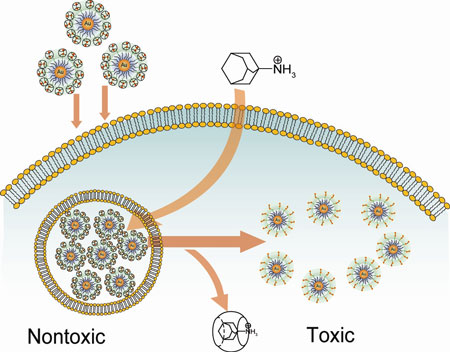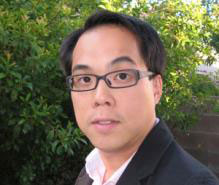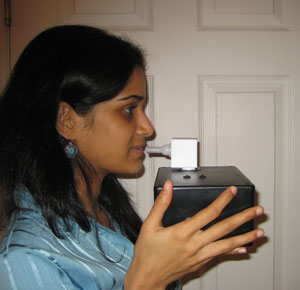This month in Albuquerque, New Mexico, scientists and engineers from around the world will convene to discuss some of the latest breakthroughs in nanotechnology, alternative energy, materials research, and medicine at the AVS 57th International Symposium and Exhibition, from October 17-22, 2010 in the Albuquerque Convention Center.
Oct 4th, 2010
Read more
Using a new X-ray-microscope that has been developed at the Institute for Structure Physics at Technical University of Dresden, in cooperation with the European Synchrotron Radiation Facility (ESRF) in Grenoble, France, it is now possible to examine smaller structures within microchips without having to prepare the chip in any way.
Oct 4th, 2010
Read more
 Researchers led by University of Massachusetts Amherst chemist Vincent Rotello have demonstrated that they can deliver a dormant toxin into a specific site such as a tumor for anti-cancer therapy, then chemically trigger the toxin to de-cloak and attack from within.
Researchers led by University of Massachusetts Amherst chemist Vincent Rotello have demonstrated that they can deliver a dormant toxin into a specific site such as a tumor for anti-cancer therapy, then chemically trigger the toxin to de-cloak and attack from within.
Oct 4th, 2010
Read more
Scientists are using Diamond Light Source, the UK's national synchrotron facility, to discover how we can detoxify our electronic gadgets.
Oct 4th, 2010
Read more
Nature Photonics publishes this week an article about the successful demonstration of a quantum error correcting code by the laboratory of Ulrik Andersen at the Technical University of Copenhagen, Denmark.
Oct 4th, 2010
Read more
Dank eines neuartigen Verfahrens lassen sich individuelle Quantenprozesse in einzelnen Molekuelen mit hoher Praezision untersuchen und kontrollieren.
Oct 4th, 2010
Read more
The Asia Nano Forum's (ANF) 3rd Asia Nanotech Camp at A*STAR's Institute of Materials Research and Engineering (IMRE) brings together 40 hand-picked PhD candidates and early career postdoctorates from the Asia-Pacific region to discuss, debate, network and collaborate on their favourite pastimes - nanotechnology, eating and shopping.
Oct 4th, 2010
Read more
 Rochester Institute of Technology has been awarded a $13.1 million grant from the National Institute of Standards and Technology to assist in construction of a new green facility that will house the university's Golisano Institute for Sustainability. The building will serve as a center for sustainability research, technology transfer, education and outreach and provide a state-of-the-art showcase for green construction and design.
Rochester Institute of Technology has been awarded a $13.1 million grant from the National Institute of Standards and Technology to assist in construction of a new green facility that will house the university's Golisano Institute for Sustainability. The building will serve as a center for sustainability research, technology transfer, education and outreach and provide a state-of-the-art showcase for green construction and design.
Oct 3rd, 2010
Read more
 The director of the National Institutes of Health, Francis S. Collins, has announced that Pak Kin Wong, UA professor of aerospace and mechanical engineering and a BIO5 Institute member, has won a $1.5 million NIH Director's New Innovator Award.
The director of the National Institutes of Health, Francis S. Collins, has announced that Pak Kin Wong, UA professor of aerospace and mechanical engineering and a BIO5 Institute member, has won a $1.5 million NIH Director's New Innovator Award.
Oct 2nd, 2010
Read more
Am 6. Oktober startet in Muenchen eine internationale Forschungsallianz, die sich zum Ziel gesetzt hat, neuartige nanotechnologische Verfahren fuer die Medizin zu entwickeln und nutzbar zu machen.
Oct 1st, 2010
Read more
ASTM International Committee E56 on Nanotechnology has created a new subcommittee, E56.06 on Nano-Enabled Consumer Products.
Oct 1st, 2010
Read more
 Researchers at Stony Brook University have developed a new sensor nanotechnology that could revolutionize personalized medicine by making it possible to instantly detect and monitor disease by simply exhaling once into a handheld device.
Researchers at Stony Brook University have developed a new sensor nanotechnology that could revolutionize personalized medicine by making it possible to instantly detect and monitor disease by simply exhaling once into a handheld device.
Oct 1st, 2010
Read more
Copper waveguides offer potential for developing smaller, more efficient, high-performance photonic components.
Oct 1st, 2010
Read more
International Conference for better understanding nanotechnologies applications and development perspectives.
Oct 1st, 2010
Read more
The National Heart, Lung, and Blood Institute (NHLBI), part of the National Institutes of Health, is awarding $65 million to renew its Programs for Nanotechnology Research to help researchers develop tools based on materials designed at the molecular level to detect and deliver treatments for heart, lung, and blood diseases.
Oct 1st, 2010
Read more
New neutron research has revealed that the proteins making up silkworm silk have unexpected properties: effectively the proteins become more concentrated as they are diluted.
Oct 1st, 2010
Read more





 Subscribe to our Nanotechnology News feed
Subscribe to our Nanotechnology News feed